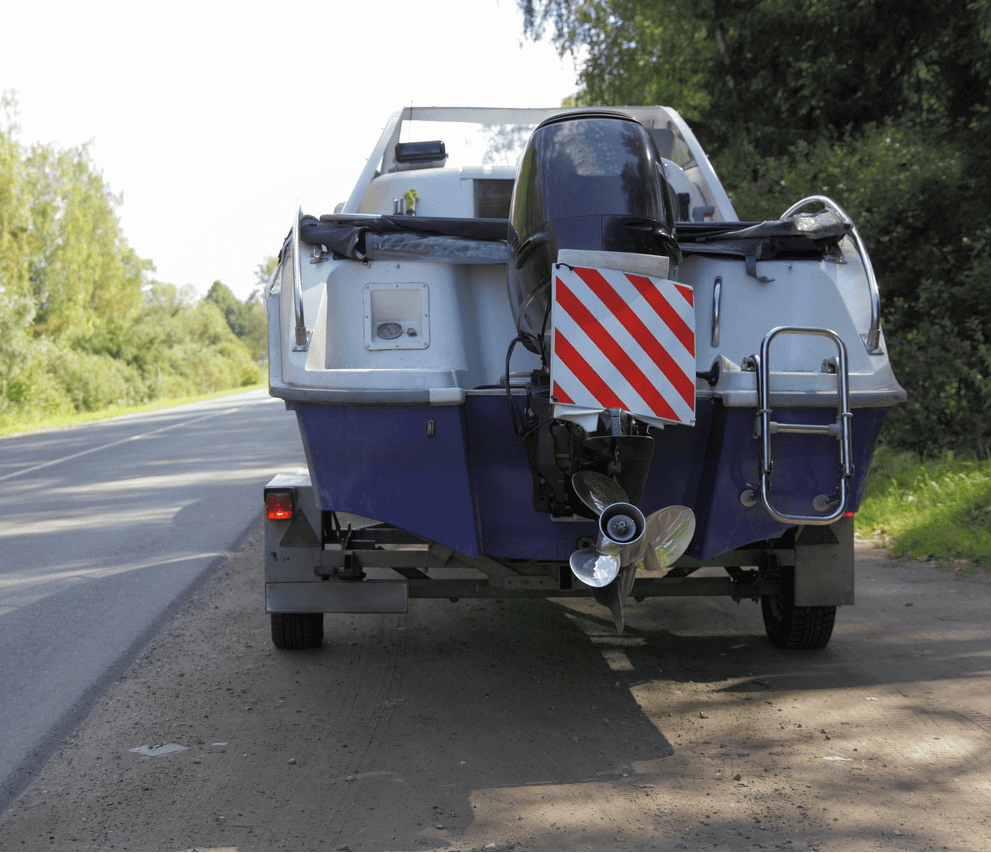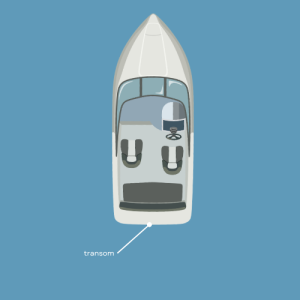
What is a Transom on a Boat?
The transom is the thick, flat area at the stern of modern boats. Its size and shape will vary according to the type of boat. Transoms can be square, round, large, small, etc.
What is the transom for?
The transom serves several purposes:
- Boat Structure: It supports the structure of your boat and strengthens the stern and aft sections.
- Motor: Motorized recreational vessels have one or more outboard motors mounted on their transoms. They can be attached to the transom in different ways, either so that they remain in the water permanently, or in such a way that they can be mechanically lifted out of the water as needed.
- Additional Fixtures: The transom is often the place where boaters will attach swim platforms and reboarding devices like transom ladders.
- Boat Name: Many boat owners choose to put the name of their vessel on the transom, since it usually rests above the water line and is easily visible.
Remember you can always confirm that your boat, including the transom, is up to standard by scheduling a free Pleasure Craft Courtesy Check.
What is the transom made of?
Today, boat transoms are made of aluminum or reinforced fibreglass, a material that is resistant to degradation when exposed to saltwater and other elements. Modern transoms are strong and can support the weight of engines and fixtures, and also of people who lean on this part of the boat when doing repairs. When underway, they absorb a lot of force from the boat engine, especially on powerboats, where a large portion of the force is transmitted through the transom to the hull.
A wooden sailboat may have a transom made out of wood. In general m the transom is made out of the same material as a boat’s hull. To confirm that your boat has been constructed using appropriate materials, refer to your vessel’s compliance notice.
Difference between the stern and the transom
You may hear some boaters use the terms ‘stern’ and ‘transom’ interchangeably. However the transom is only part of the stern.
What to do if your transom is cracked
A cracked transom is usually the result of a manufacturing defect or too much kinetic stress. If you notice a crack, you should have it repaired immediately, as a weak transom poses a danger to the structure of a powerboat, sailboat, or any other type of recreational vessel.
Get your Pleasure Craft Operator Card and learn about boat structure and maintenance
Pleasure craft operators in Canada are responsible for the upkeep of their boats, so that they can stay safe on the water and avoid accidents. Boat operators need to know what each part of the boat is for, to use their craft and all related safety equipment correctly and respond when repairs are needed.
Get your official Canadian boating license from the National Boating Safety School and find out what you need to know about boat structure and maintenance!


